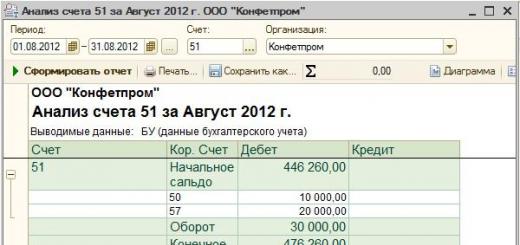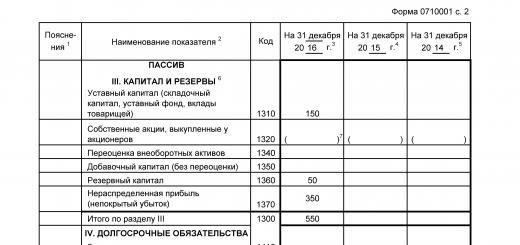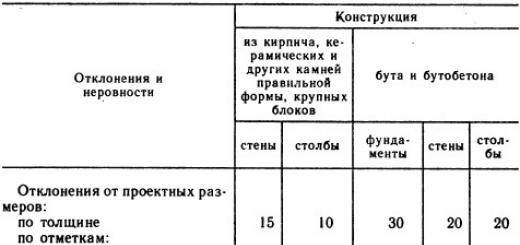A loan is an easy way to get money quickly, but sooner or later you have to pay it back with interest. Not all borrowers are able to repay the debt on time, strictly in accordance with the loan agreement. The first measure taken by the bank against the defaulter is blacklisting. Each bank or microfinance organization has its own database of loan debtors, it is not available to the general public, but you can check the fact of being on the black list.
Client base of banks
Blacklist Concept
The black list is a group of clients who periodically violate the terms of the loan agreement. In some banks, I call it differently - stop list. This includes clients who:
- do not pay the loan at all;
- make payments later than the term specified in the contract;
- do not pay the next payment in full.
In relation to such borrowers, banks take measures ranging from notifications and reminders, ending with the assignment of rights to claim debt to collection agencies. This may end in a lawsuit, which threatens the debtor with seizure of property and other restrictions.
Credit history and blacklist are different concepts. From the stop list, banks cross out the client who settled the dispute on time, data is stored in the CI for 15 years.
But according to the law, each creditor is obliged to transfer data to the Credit Bureau about unscrupulous borrowers.
What threatens the borrower with a black list
You can be blacklisted only if you systematically violate the terms of the contract. This is not just once, but several, and late payments appear through the fault of the borrower if he does not have time to pay the loan on time.
After the first delay, and if it is the only one, the bank does not blacklist the client, it can only issue a warning.
But it is in the power of the client to change the situation if he properly fulfills his obligations. The statistics in the bank's database are updated and, over time, the borrower is removed from the stop list, which will allow him to reapply for a loan.
How to check the blacklist
It is necessary to immediately determine that the list of loan debtors is available only to its employees in order to assess the identity of a potential borrower. This information is not posted online. But you can and should check your data in the following instances:
- bureau of credit histories;
- on the FSSP website;
- at the bank where the loan was previously issued;
- lists of collection organizations.
Now in more detail, in order to inquire about your credit reputation in a particular bank, you need to come to the office with a passport and ask the teller to make a report on the paid loan. It will clearly show whether the debt is repaid and how timely the borrower fulfilled his obligations. But this measure does not guarantee the client that he is not on the black list.

Loan debts
The FSSP website contains information about debts and recoverers when a court decision was made against the debtor. You can make a request online, for this, through the search engine, you need to find the official website of the FSSP and follow the following instructions:
- select "Services" in the top menu bar;
- then go to the tab "Database of enforcement proceedings";
- select the region of the Russian Federation;
- enter your full name and date of birth;
- a table with data on debt collection will be displayed on the monitor.
In the CI Bureau, a request can be made remotely, through the official resource of the system. At the request of the service, you must enter passport data and receive a report. The service is free, if you use it once a year, re-applying will cost within 1000 rubles.
Collection agencies have lists of debtors for the loans they work with. Is it possible to find out if there is a surname there? No you can not, this is private information. Only employees of the organization have access to it. But the client will definitely find out if he is on the list of the collection agency, the employees themselves will inform him about this in a short time.
Please note: the database of debtors on loans of Russian banks is strictly confidential information, no one has the right to disclose it. This is the law "On Personal Secrets", which is regulated by the Constitution of the Russian Federation.
Will the case go to trial?
Many debtors are afraid that collectors will sue the debtor. But this is the most extreme measure and they rarely resort to it. To make it clear: the task of the collector is to settle the dispute with the debtor in a pre-trial order. Accordingly, if the debt is paid in small installments, then there will be no trial.
The reverse side of the coin is that banks charge fines and penalties, which can exceed the principal and interest on the loan. Only the court can stop the process, but the collection of debts will no longer be collected by collectors, but by bailiffs.
What to do with a client who is blacklisted
It is up to the borrower to change the situation and restore the trust of the lender. To do this, you can take several steps:
- close all debts and loans;
- open a deposit account in a bank where the client is blacklisted and regularly deposit funds into it;
- if a borrower from the black list receives wages on a plastic card, then you can become a payroll client of the bank.
The statistics will be updated and the client will be able to borrow from a financial institution again. Things will be much worse if his credit history is hopelessly damaged, because absolutely all creditors check it. Although some of them may turn a blind eye to past debts, provided that they are already closed.

Find out the black list of banks
For those who are interested in how to find out the blacklist of loan debtors, we can say unequivocally that this is impossible to do. The only solution is to fulfill your obligations under loan agreements in a timely manner, calculate your financial capabilities and always get in touch with the lender in order to avoid conflict situations.
The downside of quick money received in the form of a loan from banks manifests itself when the borrower cannot or does not want to pay his debt. One of the sanctions is the blacklisting of the debtor. There is no direct access to the list of malicious non-payers, but there are ways that allow you to get information about the location of a particular person in the so-called zone of distrust.
What it is?
The black list is called differently, in the banking sector it is referred to only as a "stop list". Each bank maintains an electronic database of customers, where all information is stored, which is an individual dossier with all data on existing and previously issued loans, payments and delinquencies.
It contains a separate group, where debtors and non-payers are entered, then special requirements are imposed on these persons.
Dear readers! The article talks about typical ways to solve legal issues, but each case is individual. If you want to know how solve exactly your problem- contact a consultant:
APPLICATIONS AND CALLS ARE ACCEPTED 24/7 and 7 days a week.
It's fast and IS FREE!
- First, the security service of the bank or a specialized collection agency starts working with borrowers from the black lists.
- Secondly, it will be quite difficult to get a loan from this organization again.
- Thirdly, the debtor receives restrictions on traveling abroad if his case is transferred to the bailiff service. Fourthly, by a court decision, the property of the non-payer is seized.
A bank client who is on the black list always has the opportunity to leave it. It all depends on his specific actions. When the problem is quickly resolved, it is removed from the bank's stop list.
The main problem is that, according to Article 23, Clause 4 of the Federal Law “On Credit Histories”, a credit institution is obliged to provide all information about the borrower to the credit history bureau. Information is stored in it for 15 years.
Almost all banks, when applying for loans, apply to a credit bureau to determine the integrity of a potential client, which means that if you previously had problems with paying debts, any bank may refuse to provide you with a service.
It is the credit history bureau that is considered the first instance where you can see the black list of bank debtors by requesting an extract in the prescribed form.
Who gets into it?
The database of persistent non-payers includes persons with arrears on loans. Usually, the list is formed from those whose credit history is clearly damaged due to regular delinquencies and large debts.
Citizens who are late with payments several times and for several days receive only warnings from the bank.
Having delayed payments for several months, you can be sure that you are on this very list. Soon these non-payers will face lawsuits and decisions of the executive service.
Even if after the delay you repaid the main debt, interest, paid fines, there is a high probability that the bank will still blacklist or leave you on the blacklist.
Where to find?
Before answering the question of how to view the blacklist of bank debtors, we will divide the possibilities for obtaining information into several informal groups, depending on the consumer's credit history, namely:
- stop lists in banks where the borrower made delays in payments;
- lists of collection agencies;
- lists of bailiffs;
- data from credit bureaus.
The blacklist of a commercial bank is private information, and it is impossible to get it in the public domain. It is only at the disposal of the organization's credit managers and is used to assess the integrity of a potential bank client.
The bank's stop list is an unofficial document and should not be posted online.
To get information, you need to contact the bank where you took the loan. Request official data on repaid loans taken from this organization. To make a request, you must have a loan agreement and an identity document in your hands.
However, the absence of debts does not guarantee that you are not included in the stop list, which means that subsequent decisions on issuing a loan in this organization will be considered individually.
Collection agencies receive information about debtors directly from the credit institution. From the moment the bank applies to the debt collection service, all rights to claim the debt pass to the collectors. They are engaged in maintaining a database that reflects the names of malicious defaulters on credit obligations.
A credit history bureau is a specialized organization that provides services for the formation, processing and storage of credit histories.
According to Russian law, any borrower can make a free request once a year and an unlimited number of requests for a fee.
To obtain information from the database of credit history bureaus (CHI), you must:
- Form a request to the CCCH in order to obtain data on which credit bureaus store your credit history. This can be done through any bank, for example, VTB24.
- Form a request to the BCI in order to obtain a credit report. The procedure for applying to the BKI is established by the rules of the organization and Russian legislation.
On the site of bailiffs
One of the more popular ways to get information about being blacklisted by a bank is to contact the bailiff service.
The official website of the federal bailiff service has a database of debtors. It reflects information about whether a person is in the database of debtors.
To access it, you must fill out the prescribed form. You must enter the territorial authority, full name and date of birth. In addition, it is possible to submit a request as an individual entrepreneur and legal entity.
Access to the database of bailiffs was opened recently after the introduction of the Federal Law "On Enforcement Proceedings" adopted by the State Duma.
The existence of such a database has simplified the work of credit institutions, since it reflects debtors not only for loans, but also for non-payment of taxes, alimony and other debts. The service allows you to easily determine the reliability of the borrower.
If it didn't go to court
Collection agencies intimidate debtors with the court, but in fact they do not file documents with the court soon and only in cases where the debtor completely ignores them and refuses to return the money.
If the debt is repaid at least in small parts, the collectors will not move forward, because in this situation the debt grows, and this situation is beneficial for both the bank and the collectors.
The court is not a way out for the debtor, but the decision of the court will stop the growth of the bank's interest, and the amount of debt will not increase.
It is worth noting that if a court decision is not made, then the borrower can only find out his own debts. And after the decision was made, everyone can get acquainted with his debts on the website of the bailiffs.
What if you are on the list?
Usually people, when they find out that they are on the black list of banks, take absolutely no action.
Going to the bank and discussing with the manager do not give any results, which means that in order to regain the trust of banks, it is necessary to radically change your financial and payment policy.
- Pay off all debts, interest and fines to a credit institution.
- Open a deposit account with a bank that has blacklisted you. Its regular replenishment, operations on the account, payment of utilities and other services will change the bank's view of your personality. By being responsible, you will be able to regain your creditworthiness.
- If there is a possibility and your employer transfers your salary through the bank that blacklisted you, try to open a current account in it to transfer wages to it. Regular receipt of funds to the current account will increase confidence and soon you will have an increased chance to get out of the black list of the bank.
Thus, in order not to have problems with the bank and bailiffs, think several times before taking out a loan, whether you can make a monthly payment, and whether there will be enough funds left for you to exist after paying the monthly debt. Finding yourself on the list of unscrupulous defaulters is much easier than maintaining your credit history at a trustworthy level.
It is very important for each bank to work with conscientious clients, since each borrower's overdue debt is a lost profit that occurs due to the withdrawal of funds from circulation. Therefore, in any financial institution there is a black list of debtors with a bad credit history. It is formed differently in each bank, many special programs have been invented for this, but the principles of its creation are similar.
The most important principle for compiling this list is to include borrowers who are in arrears. And the defaulter gets there from the first day of the overdue debt. Very often, this phenomenon is due to the fact that the payment period has a fixed value (as a rule), and a calendar month has a different number of days. Therefore, the write-off date (the date on which the funds must already be in the account for crediting the loan payment) is constantly shifted due to those months in which there are thirty-one calendar days. Clients in most cases do not understand this and unknowingly allow debt, getting into the black list of individuals with a negative credit history.
Each bank maintains its own black list of non-payers and banks cannot officially transfer this information to each other. However, in reality, bank security services actively exchange this kind of information among themselves. Information about blacklisted debtors is sent directly to credit bureaus. Each bank can transfer data on different loans of the same person to different BCIs, however, the client’s consent must be given to this, and in writing. As a rule, this is one of the clauses of the signed loan agreement.
Thus, before starting cooperation with an individual, the bank sends a request to the Central Bank in order to determine the credit bureau where the data about the borrower is stored. This is followed by a request directly to the BKI, after which an appropriate decision is made.
Some banks do it easier - they require the client to have at the time of sending an application for a loan, which will indicate his involvement in the blacklist of debtors or its absence. This operation can be done once for free, paying only a small commission.

Individuals who have committed overdue debts are divided into several categories, and based on this, appropriate penalties are applied to them. The main criterion is the period of overdue debt on the main payment.
From the first day of the overdue debt, the client's contract falls into the so-called collection department. This can be either a separate structure (in large financial institutions), or the involvement of an outsourcing company (collection agency). When compiling a black list of people with a negative credit history, it is also taken into account whether the debtor answered the calls of the collectors, whether he made false promises to pay the debt, whether the demand was made to pay off the full amount of the debt.
After making a claim (this occurs, as a rule, after 90 days of delay in the monthly payment), the client enters the list of persistent non-payers, whose history is very badly damaged, this criterion is highlighted as a separate item. And even in this case, the bank goes towards the borrower and provides installments.
If the debtor does not pay under such conditions, the debt is sold to collectors, and the list of persons with such a history is in a hopeless recovery. Obtaining a loan after such cases in the territory of the Russian Federation is unlikely for 15 years.
What is this list for?

The main purpose of this kind of information is to protect the bank from cooperation with unscrupulous borrowers.
What is fraught with and how to avoid a similar situation
A client with a negative credit history will not be able to get a loan, or will receive it, but on less favorable terms. Regarding the black list of debtors, everything is not so bad here: as soon as the borrower closes the overdue debt, he, after writing off the payment, fine (if any) and withdrawing the agreement from the collection department, will be able to take the next loan, perhaps even in the same financial institution. With an active delinquency on the EP, the chances of obtaining a loan are almost zero. And therefore, it is impossible to allow getting into the black list, since there are a great many opportunities for this now, since the banks themselves want to maintain mutually beneficial cooperation with the client.
- The easiest way is to refinance. As a rule, this is done in another financial institution, and the bank from which the borrower took the loan will not initially object, and the client will win an additional month to resolve his financial issues, while he will not be included in the list of debtors and will not receive a fine. However, all this must be done on time, before the occurrence of overdue debts, having sensibly calculated your financial capabilities. No one will allow a client from the black list to refinance.
There are cases when borrowers, in order to pay off an overdraft on a credit card, take a loan and completely cover the debt. Very profitable, by the way. - Change the due date for the monthly payment. For example, if the borrower has postponed the date of issue of wages and the write-off date comes earlier, then in order not to be blacklisted, the borrower must postpone this date by paying a small commission.
- Change the amount of the monthly payment by extending the term of the loan agreement. It is unprofitable for the client of the bank - you will have to overpay more interest. But the reputation will remain clean!
So in fact, this black list is not so terrible, there are a lot of ways to avoid it. It's just that there are responsible people, and there are not so much. One way or another, today in Russia there is a lot of competition between banks, so they are ready at their own peril and risk to cooperate with those clients who have not shown themselves from the best side in cooperation with their fellow competitors. There are microfinance organizations that, by and large, enter into loan agreements with everyone who asks for their help, without refusing anyone. However, the percentage for the use of money by mutual agreement in such cases will be incomparably higher. In addition, guarantors may be required or some other problematic points will come up.
 Also, in most cases, for clients from the black list of persons with a negative credit history, secured loans remain available (issuance of funds secured by real estate or a car). Collected collateral is elementary and the bank does not risk anything in this case.
Also, in most cases, for clients from the black list of persons with a negative credit history, secured loans remain available (issuance of funds secured by real estate or a car). Collected collateral is elementary and the bank does not risk anything in this case.
It is better to repay debts on time, because this is the only way to avoid problems and make your life a little calmer and easier. But, if for some reason there are doubts about the credit history, you can look for the black list of bank debtors and see for yourself.
This simple action will relieve the anguish and help you understand why it is so difficult to get a new loan. In addition, it can be useful for those who are not going to take a loan yet, because with its help you can find out about all the accumulated debts and unpaid fines.
If there are any, you should not postpone their repayment for a long time, it is better to do it as soon as possible so that you do not run into trouble later and do not become a participant in the trial.
Given the above, it becomes obvious why it is so important to monitor your credit history and check the coverage of past debts. But how do you know if everything is paid? Where to check your credit history in 2018?
How to find out about accumulated debts?
First of all, considering the question of where to get information about outstanding loans and accumulated debts, it is worth clarifying that sometimes the process of obtaining such information takes time. Therefore, it is worth sending requests and starting to look for information in advance, so that later it will not be too late.
In total, there are 3 main ways to view the blacklists of debtors and clarify your credit history:
- contact the bank where the loan was previously taken;
- check in the database of the federal bailiff service;
- send a request to the credit bureaus.
Each described method has its positive and negative sides and reveals only part of the information about debts. To see not only the credit histories of individuals, the black list and information about loans, but also to clarify information about fines, unpaid alimony or other debts, it is better to use at least two of the presented methods. This is the only way to get all the data you need, because in all other cases the information will not be complete.
List of debtors who are prohibited from traveling abroad for 2018
Each time, issuing a new loan, the bank collects information about its client and starts a file on him, in which every detail important for the loan is entered. Later, all information about the loan and payments made is transferred to the credit bureau. It is to this bureau that all credit institutions turn to decide whether the next borrower can be trusted.
But it is no secret that each bank maintains its own credit history and collects its own personal dossier on customers. Usually, this information is decisive in making decisions on issuing loans.
Of course, only certain bank employees have access to such dossiers, and its disclosure is strictly prohibited. But every borrower has the right to receive information about their debts and loans, even if they are fully paid and closed. To do this, you need to visit the bank and request your credit history. You should have 2 documents with you:
- the passport;
- loan agreement (if any).
Some banks provide information about debts on their websites in the user's personal account. Naturally, to enter your personal account, you need a username and password.
In addition, some collection agencies also collect their lists of non-payers. But only those who had to deal with the activities of collectors can access them. That is, it will not be possible to see the list of debtors on the website of the National Debt Collection Service. Its publication violates the rights of borrowers and is prohibited by law.
National debt collection service, official website, list of debtors
The next way to get acquainted with the accumulated debts is to contact the federal bailiff service. By contacting this organization, you can see the black list of credit debtors by last name for free. There are two main ways to get the information you need:
- visiting the FSSP in person;
- by requesting information on the website of the organization.
The second method is much simpler and more efficient. To use it, you just need to go to the official website of the institution, and then indicate your last name in a form specially available for this. It is in the most prominent place on the home page of the site.
After entering the last name, it remains to enter a short code, which will be indicated right there, after which it will be possible to get acquainted with the results of the check. There are 2 main answers. The first option will indicate that nothing was found in the database, which means the complete absence of debts, and the second option will contain a table where all the basic information about debts is available.
It is worth knowing that the website of the federal bailiff service is the only place where information about debts and debtors is in the public domain. In all other cases, it is strictly confidential, and only persons established by law and the debtors themselves can get acquainted with it.
credit history bureau
 The last and most complete verification method is to query the database of credit bureaus. Such bureaus contain absolutely all information about loans and borrowings. This includes all information about payments made and delays.
The last and most complete verification method is to query the database of credit bureaus. Such bureaus contain absolutely all information about loans and borrowings. This includes all information about payments made and delays.
You can get your credit history in the following ways:
- by filling out an application on the website of the Central Bank;
- sending an application by mail;
- contacting a notary;
- using the services of credit bureaus (listed in the register of credit bureaus of the Central Bank of the Russian Federation);
- through credit institutions.
Each of these methods does not contain anything complicated. To use them, you need a passport, phone number and e-mail. In addition, in some cases, money may be required (notary services are not free).
The BKI will not be able to see the black list of debtors on loans from Russian banks, the names of unreliable borrowers and other similar information. As mentioned earlier, it is not subject to disclosure. But on the other hand, in it you can get acquainted with your own credit history and find out if there are any unpaid loans that have been forgotten for some reason. At the same time, a request for obtaining a credit history is free if you send it no more than once a year.
Why should you be aware of your debts?
Money matters require special care and attention. You should be aware of your debts and make sure that they are paid on time. Otherwise, you can face the most unpleasant consequences:
- transfer of debt to collectors;
- a ban on traveling abroad;
- refusal to issue new loans;
- high interest rate and small future loan amount;
- withholding part of the salary to pay the debt;
- arrest of accounts and property.
All these troubles can overtake someone who did not follow the timely payment of debts and does not consider it necessary to pay their bills. At the same time, a meeting with collectors and problems with obtaining new loans are possible after small delays.
All other consequences of uncovered debts can occur only after the appropriate court decision is made. But it is important to know that, depending on the amount of the debt, most of these decisions will be made through the issuance of a court order. This should be remembered by debtors abroad who did not pay the loan on time, since the issuance of a court order does not require the obligatory presence of the defendant at the court session, and the time for appeal is minimal.










